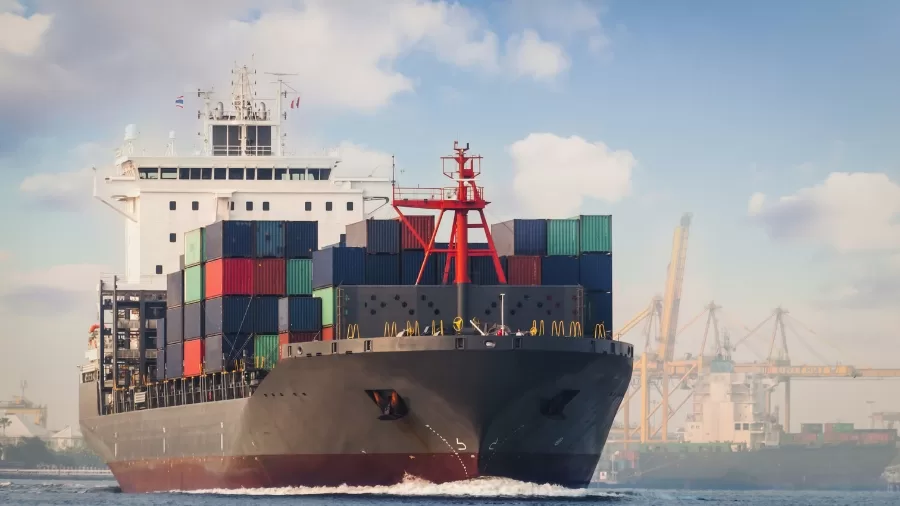Resources
Ammonia: The Surprising Candidate for a Sustainable Shipping Revolution!

- Ammonia is emerging as a possible alternative fuel for the shipping sector, with zero carbon emissions and existing production infrastructure, but it faces considerable barriers to wider adoption.
- Key hurdles include safety concerns about the toxicity of ammonia, technological barriers to producing appropriate engines, and expensive green ammonia production costs.
- Collaboration among governments, corporations, and research institutions is critical to addressing these difficulties and developing the necessary infrastructure for ammonia-powered vessels, opening the path for sustainable maritime transit.
As the shipping sector aspires to net-zero emissions, there is increased demand to use cleaner, more sustainable fuels. Among the numerous possibilities, ammonia has emerged as a prominent candidate, with the potential to replace the heavy fuel oil that drives the vast majority of the world’s ships. A recent poll by the Maersk Mc-Kinney Møller Centre for Zero Carbon Shipping (MMMCZCS) found high acceptability of ammonia as a marine fuel, but hurdles remain before it can be fully adopted.
The Growing Need for Sustainable Shipping
Shipping accounts for approximately 3% of global greenhouse gas emissions, needing immediate action to meet the International Maritime Organization’s ambitious targets. The IMO’s 2023 Greenhouse Gas Strategy calls for a 40% reduction in carbon intensity by 2030 and a transition to net-zero emissions by 2050. As global trade expands, relying on traditional fossil fuels becomes increasingly unsustainable. The maritime industry must transition to alternate fuels, with ammonia standing out for its particular qualities.
Why Ammonia?
Ammonia is a chemical molecule composed of nitrogen and hydrogen (NH3). Unlike traditional fossil fuels, ammonia has no carbon atoms, therefore burning it creates no carbon dioxide emissions. This makes it an appealing option for a world looking to transition to decarbonisation. Furthermore, ammonia is currently manufactured in enormous amounts for use in agriculture and industry, so the infrastructure to create it is well established.
Key advantages of ammonia include:
- Zero Carbon Emissions: Burning ammonia emits no CO2, which aligns nicely with decarbonisation efforts.
- Energy Density: While not as energy-dense as diesel, ammonia has a higher energy density than hydrogen, making it appropriate for long maritime excursions.
- Existing Infrastructure: Ammonia is currently widely manufactured for agricultural and industrial applications, laying the groundwork for the essential infrastructure at ports.
- Ease of Storage: Unlike hydrogen, ammonia may be stored as a liquid at very mild conditions, easing logistics.
- Sustainability Potential: Green ammonia manufacturing, which uses renewable energy, promises to be a carbon-free process, cementing ammonia’s status as a sustainable fuel.
What’s Holding Back Ammonia?
Despite its promise, ammonia is still not a viable solution for the shipping business. Several substantial challenges exist that must be overcome before it can be broadly implemented. One key issue is toxicity and safety. Ammonia is a dangerous substance that can cause serious harm if inhaled or consumed, and it is corrosive to human flesh. In the event of a spill or leak, the release of ammonia into the atmosphere could endanger human health and the environment. Although safety rules for handling ammonia exist in areas such as agriculture, implementing these protocols on the scale required for transportation poses obstacles. Ports, ships, and transportation infrastructure must be outfitted with elaborate safety features to prevent and contain leaks.
Technological issues also provide a barrier. Ammonia can be burned as fuel, but only with specialised engines. Currently, there are no commercial ammonia-powered ships, although various corporations and research organisations are developing ammonia-compatible engines. These engines must burn ammonia effectively while not emitting dangerous byproducts such as nitrogen oxides (NOx), which are powerful pollutants. The development of these engines is still in its early stages, and it could be years before ammonia-powered ships are widely used.
Furthermore, the high production costs of green ammonia represent a substantial barrier. Producing green ammonia is still more expensive than conventional ammonia manufacturing, which uses fossil fuels. The primary cost driver for green ammonia is the energy-intensive process of creating hydrogen via electrolysis. While renewable energy costs are reducing, green ammonia is still not economically competitive with traditional fuels, and manufacturing costs must reduce dramatically before ammonia can be considered a viable alternative.
Storage and transportation constraints hamper the use of ammonia. While ammonia is easier to store than hydrogen, it still poses issues when compared to typical fuels such as diesel or fuel oil. Ammonia requires specialised storage tanks and handling equipment in both ports and on ships. Retrofitting older ships to run on ammonia would be costly, and new ships would have to be built particularly for ammonia use. Furthermore, while ammonia is already carried around the world, increasing production and delivery to meet the shipping industry’s demands would necessitate large infrastructure investments.
Finally, regulatory constraints must be overcome before ammonia may acquire traction as a marine fuel. The International Maritime Organisation has been slow to adopt stringent carbon emission regulations, and it may take years to establish new laws that mandate or incentivise the use of alternative fuels such as ammonia. Meanwhile, shipping corporations may be hesitant to invest in ammonia-powered ships unless there is a clear legal environment that encourages their use.
The Path Forward: Overcoming Barriers
To make ammonia the key to net-zero shipping, governments, businesses, and research institutes must work together to remove the challenges described above. Investing in research and development is critical for developing ammonia-compatible engines that are efficient and safe. This should include lower NOx emissions and improved ammonia combustion efficiency. Furthermore, advances in green ammonia production technologies can help lower production costs, making sustainable ammonia more accessible.
International cooperation and regulation will be crucial in developing a regulatory framework for ammonia uptake. The International Maritime Organisation (IMO) and national governments should set emission reduction targets that encourage the use of alternative fuels, create safety standards for ammonia handling, and assist the development of port infrastructure capable of accommodating ammonia-powered vessels. Ensuring that ammonia-powered vessels can sail between nations without encountering regulatory barriers is critical for global adoption.
Furthermore, expanding the infrastructure for generating, storing, and transporting ammonia will necessitate significant expenditure. This includes constructing manufacturing facilities, storage and handling facilities at ports, and modifying ships with ammonia-compatible engines. Public and private investment will be required to build this infrastructure. Governments can help by providing incentives and subsidies for ammonia infrastructure development, and shipping corporations can invest in converting their fleets.
Improving safety procedures is also essential for managing ammonia risks. The industry must create strong safety regulations for handling and shipping ammonia at sea, including constructing ships with improved safety features like leak detection systems and containment measures. Crews will need to be trained in safe ammonia handling, and safety standards must be put in place to ensure that ammonia may be utilised without endangering human health or the environment.

























































